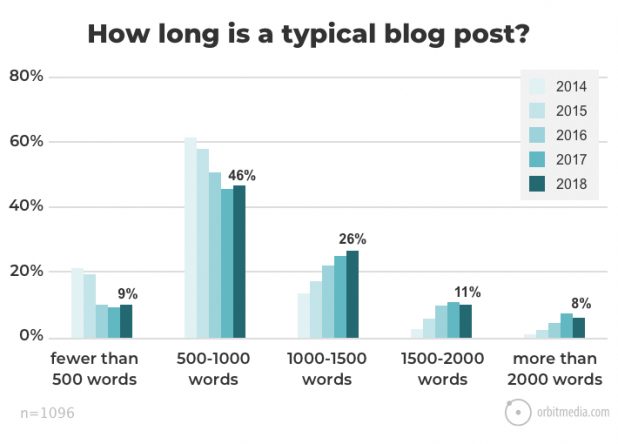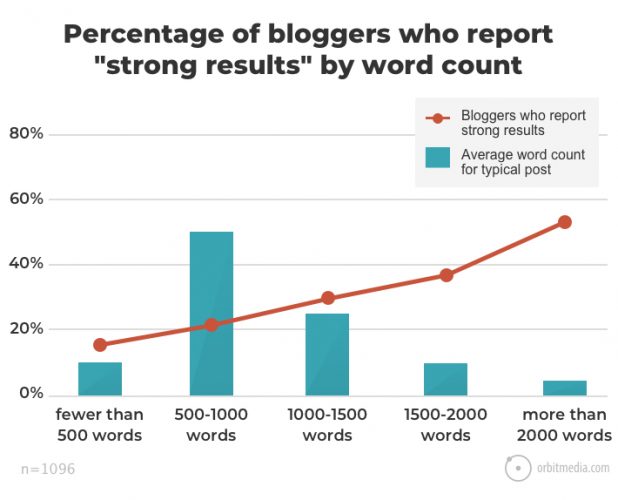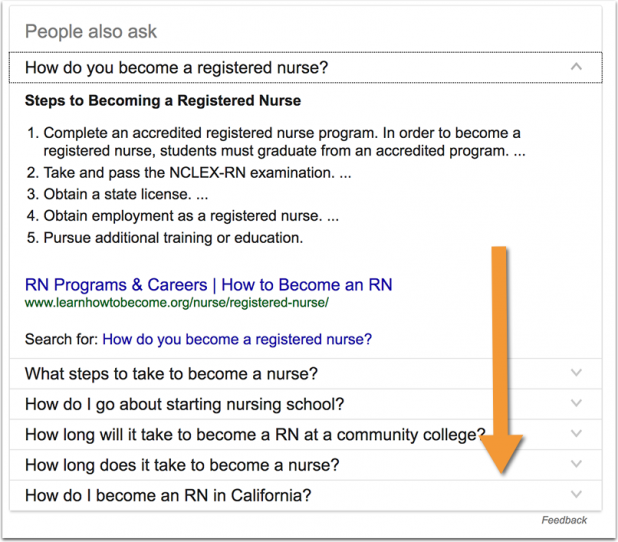Yes, it’s that time of the year again.
It’s the ideal time to make plans for taking over the world, one SERP at a time.
If that sounds like your plan, this guide is what you need. A quick note: this guide is not about predictions, trends and educated guesses. It’s a real guide, a collection of SEO tactics that work wonders today and are bound to work even better tomorrow.
Let’s take a look at what will work in SEO in 2019.
1. RankBrain and user experience
Much like your entire marketing strategy, your SEO should also be consumer-centric. I’ve said it before: think about what your potential customer wants to read first, not about what Google wants to read.
Ironically enough, Google agrees. They rank websites that consumers like higher.
And in order to find out what consumers like, they use RankBrain.
Briefly put, RankBrain is the machine learning algorithm that Google uses to rank results. And it’s darn important.
In fact, Google said that “in the few months it has been deployed, RankBrain has become the third-most important signal contributing to the result of a search query.”
So how does RankBrain really work?
It takes a look at how users interact with the search results. Let’s say you search for “chocolate cake” in Google. You click on the first result, but it’s a terribly commercial article that simply wants to sell you some baking tools. So you get out of there pretty fast.
On the other hand, the third result is an amazingly detailed recipe on how to bake the perfect chocolate cake from scratch. So you read it thoroughly. You jot down the ingredients you need to shop for. Then you save it to come back to when you’re ready to begin baking.
RankBrain takes note of all that. And, if more users go through the same process you did, they will demote the first result and boost the ranking of the third one, with the amazing recipe.
RankBrain focuses on:
- The time users spend on your page
- The organic CTR (how many people click on your links from SERPs)
In other words, in 2019 you need to give the gift of relevance.
Make sure that you keep people reading by writing information-packed articles, not advertorials disguised as helpful reads.
As for the CTR, this one may be quite tricky to boost.
First of all, because SERPs are now crowded by Google ads, featured snippets and related search suggestions. Your links have to be exceptionally good to get clicks.
You can start with two things:
- Write great headlines for your articles
- Write compelling meta descriptions that entice users to read more.
And, more importantly, remember that your entire content has to be truly exceptional. If you only trick people to click on your articles and they bounce back to search results, you’ve accomplished nothing.
2. Write in-depth, comprehensive content
Remember when Google used to look at how many times you mentioned a keyword in your content and at your tags to decide where you need to rank? Well, they still do that.
But today, this is just one of the less important factors.
What matters most is how comprehensive and in-depth your content is. How well you covered a certain topic.
For example, let’s say you plan to write a blog post about “the best coffee in the world.” It’s obviously not enough to say that it can be found in your coffee shop.
You need to describe how and where said coffee is planted, when and how it’s harvested, what it is treated with and roasted, how it is transported and packaged and how the final consumer should brew it.
This is just a VERY short summary of what a comprehensive article on this topic should contain. During your research, you may uncover other things that need to be mentioned.
Needless to say, an in-depth piece of content can’t be 500 words long. You need much more than that to cover almost any topic.
Thus, it’s not a coincidence that longer blog posts rank better. Or that bloggers and marketers have started to write more.
Research by Orbit Media (November 2018) shows that the word count of blog posts has been steadily growing since 2014.

Yes, bloggers spend more time and resources crafting blog posts. But the results speak for themselves.

What does this tell us about SEO in 2019?
Two very important things:
- You need to publish content that is longer than 2000 words
- Your content needs to be evergreen and authoritative
This means that simply fluffing up your posts so you can get to 2000 words isn’t enough. Authoritative content is well researched and it has a lot of inbound and outbound links that show Google you’ve done your homework.
When you explore every facet of a topic, you are bound to use your main keyword often enough naturally and a lot of LSI keywords that work wonders for contextual optimization.
3. Aim to rank your content in featured snippets
Remember what I said above about SERPs being crowded with ads, related searches AND featured snippets? Well, you can turn the last bit of bad news into good news.
But be warned it won’t be easy.
Almost 11.4% of SERPs now have a featured snippet. You know it, it’s the box that pops up at the very top of your search.

OK, now that you know for sure what it is, I’m pretty sure you want it. How do you get it? Do you even stand a chance to?
Well, Ahrefs tells us that 99.58% of featured pages already rank in top 10 of Google. If you’re not there yet, take another look at steps one and two above.
If you are, then:
- Find the keywords that you already rank high for (and a few that are close to top 10 yet and can be easily upgraded)
- Find out if those keywords have a featured snippet (you can use tools like Ahrefs, SEMrush or a simple Google search for this)
Now it’s time to get to work.
In order to rank your content in a snippet, you have to choose one of the three formats that these pesky snippets come in:
- Paragraph (the answer to a question given as text)
- Table
- List
As you may have expected, the most common snippets are paragraphs.
To rank for either of these types, you need to give the answer to specific questions in one of the three formats. Don’t forget to start your paragraph, list or table with the actual question in order to properly signal Google what you are answering to.
For paragraph snippets, make sure your answer is no longer than 40-60 words. If your topic is complex and needs a broader definition, condense it in no more than 60 words right after the question, then proceed to expand upon it.
Of course, you can’t expect to rank in a featured snippet if your entire article is a short definition. Take a look at what happens when you click on an answer box or featured snippet:

You get a new box of related questions. Make sure that your article answers most (if not all) of these, too.
Again, you need comprehensive, in-depth content to rank higher!
Bonus: writing your content this way (in a Q&A form) also helps you rank for voice searches. And we all know that they are on a continuous rise.
4. Be as mobile-friendly as possible
I’m not saying that you should forget about the desktop version of your website. I’m just saying that if you have to choose between which version looks and feels better, you should go with the mobile one.
The rolling out of Google Mobile First Index means that the search engine now considers the mobile version of your website to be the “primary” one. If that fails to perform, so will your entire website.
Loading speed, mobile UX and accurate display of information are just a few of the factors that influence the quality of your mobile website. By the way, if you still have an old-school mobile website, it’s high time you switched to mobile responsive design.
Since most searches now take place on a mobile device, you want to make sure you give those users a flawless experience. No matter how good your content is, people will bounce right out of poorly designed mobile pages.
Wrapping things up
If you got this far, then you probably realized what the main takeaway is: write and design for humans, not machines. Forget about B2B and B2C – companies don’t make decisions for themselves, you’re still speaking to humans.
It’s the H2H (Human to Human) era. And no one emphasizes it better than Google. They are trying to make access to GREAT content easier for everyone by ranking higher those websites that truly take the time to write comprehensive and in-depth content.
If you want to help Google accomplish this goal (read: create content that both Google and human readers devour), my team of excellent SEO writers and I are just a click away.
Let’s talk about how you’ll conquer SERPs in 2019.





